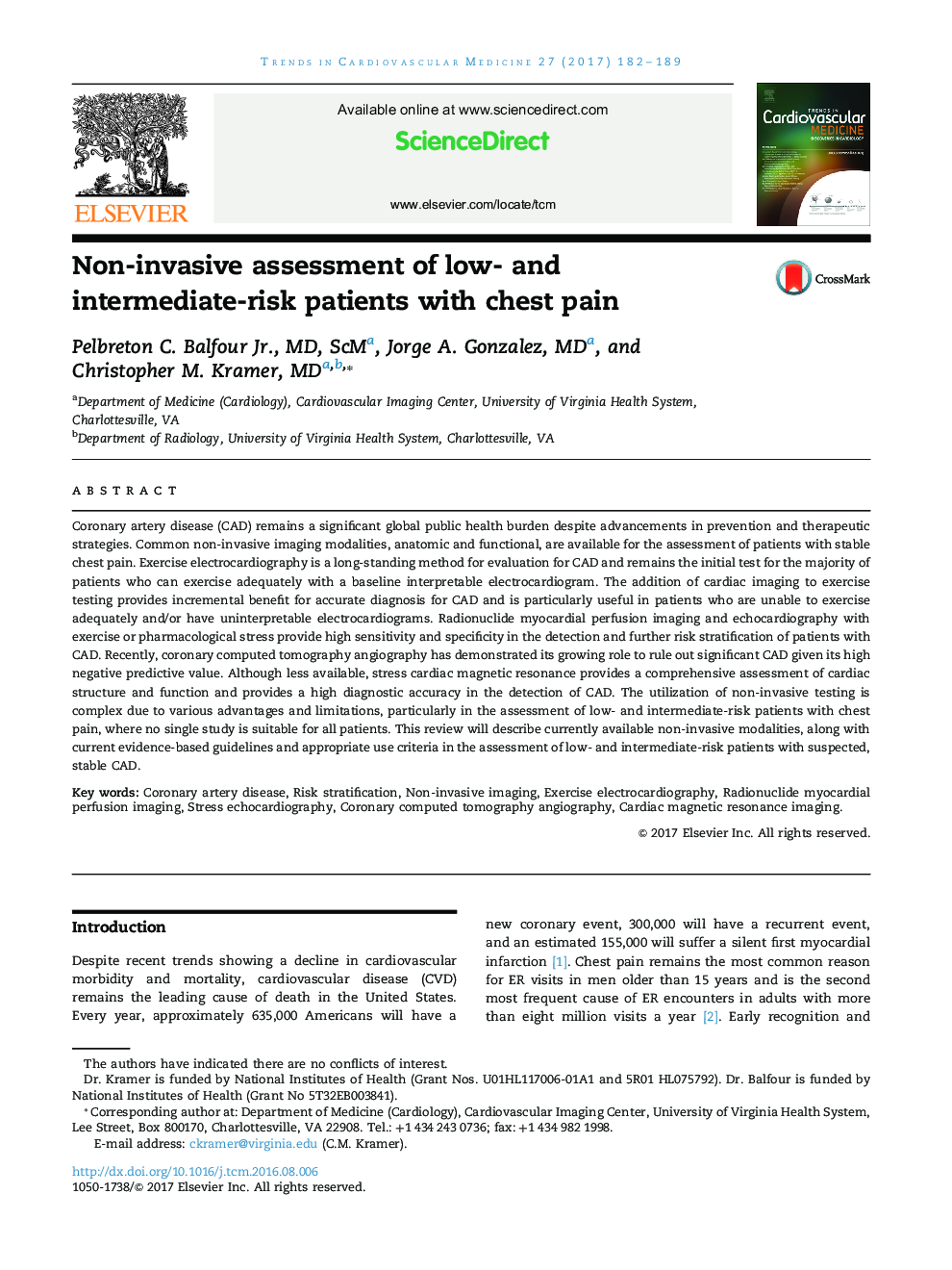| Article ID | Journal | Published Year | Pages | File Type |
|---|---|---|---|---|
| 5622364 | Trends in Cardiovascular Medicine | 2017 | 8 Pages |
Coronary artery disease (CAD) remains a significant global public health burden despite advancements in prevention and therapeutic strategies. Common non-invasive imaging modalities, anatomic and functional, are available for the assessment of patients with stable chest pain. Exercise electrocardiography is a long-standing method for evaluation for CAD and remains the initial test for the majority of patients who can exercise adequately with a baseline interpretable electrocardiogram. The addition of cardiac imaging to exercise testing provides incremental benefit for accurate diagnosis for CAD and is particularly useful in patients who are unable to exercise adequately and/or have uninterpretable electrocardiograms. Radionuclide myocardial perfusion imaging and echocardiography with exercise or pharmacological stress provide high sensitivity and specificity in the detection and further risk stratification of patients with CAD. Recently, coronary computed tomography angiography has demonstrated its growing role to rule out significant CAD given its high negative predictive value. Although less available, stress cardiac magnetic resonance provides a comprehensive assessment of cardiac structure and function and provides a high diagnostic accuracy in the detection of CAD. The utilization of non-invasive testing is complex due to various advantages and limitations, particularly in the assessment of low- and intermediate-risk patients with chest pain, where no single study is suitable for all patients. This review will describe currently available non-invasive modalities, along with current evidence-based guidelines and appropriate use criteria in the assessment of low- and intermediate-risk patients with suspected, stable CAD.
